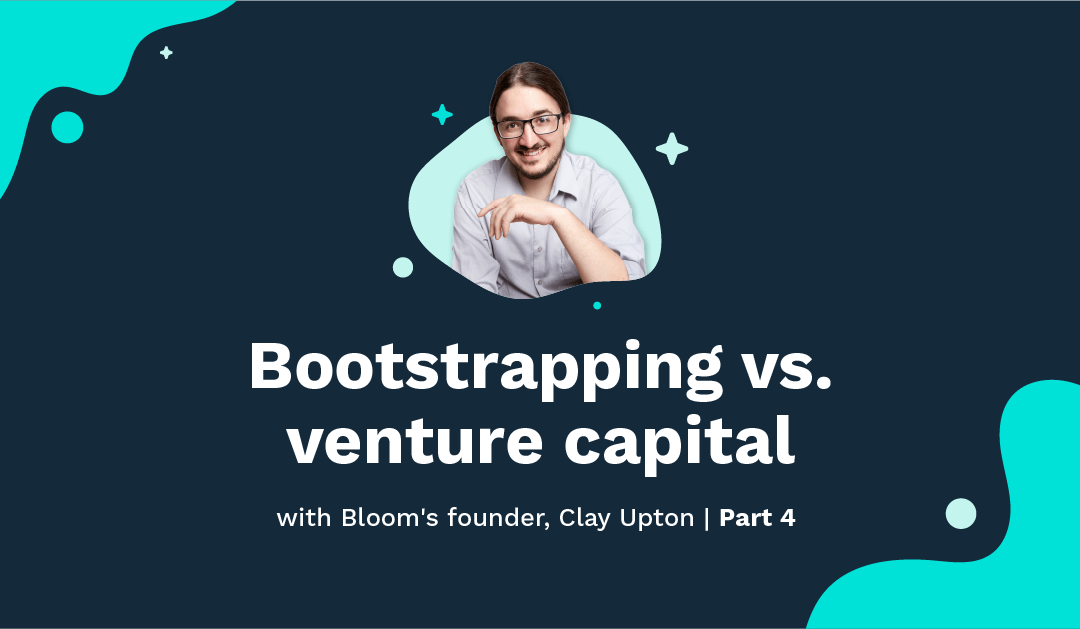We earn from qualifying purchases from Amazon Associate links.
Bootstrapping vs. venture capital: Growing a business without investors series | Part 4 (Want to start at the beginning? Read Part 1)
This blog is written by Clay Upton, entrepreneur, patent holder, and founder of Bloom Growth. Read his full bio below.
In this post, we break down how to choose a pricing strategy that supports profitability, scales with client size, and helps founders grow without investor funding.
Why pricing strategy matters for bootstrapped businesses
When you’re growing a company without outside funding, getting to profitability fast isn’t just a goal—it’s survival. A solid pricing strategy helps you recover costs, reinvest quickly, and fund growth organically. Whether you’re operating with a business execution system or simply flying by instinct, your margins need to support early hiring and reinvestment. The stronger your pricing foundation, the faster you can scale, especially without the cushion of venture capital.

Understanding your ideal client to reach profitability faster
If you’re serving small to medium-sized businesses (SMBs), price sensitivity follows a clear pattern:
- A few hundred dollars a month = a rounding error
- A few thousand = noticeable
- Ten thousand = painful
Each market segment demands a different acquisition approach:
- Direct-to-consumer (D2C): Shotgun approach
- Enterprise: Precision sniper approach
- SMBs: A strategic blend of both
This means that for SMBs, you must nurture individual clients and keep your sales pipeline full.
Match your pricing to your expenses
One of the smartest moves in a bootstrapped model is aligning pricing with cost structure. Here’s how:
- Fixed expenses? Offset them with fixed recurring revenue.
- Variable or one-time expenses? Try to recuperate these upfront or as early as possible.
This reduces your time to break-even and makes your cash flow more predictable. In other words, build a pricing model that doesn’t let expenses outpace revenue, especially if you’re scaling your business with a structured process.
Scale pricing with client size
If your product or service delivers greater value to larger clients, your pricing should scale accordingly. For example, at Bloom Growth, the cost of closing, training, and onboarding new clients is substantial. If pricing were linear, servicing smaller clients would be a loss. That’s not sustainable in a bootstrapped model. So we structure our pricing to ensure that:
- Larger clients pay more because they get more value
- Smaller clients aren’t a drain on resources unless pricing accounts for that upfront
This is especially critical if you’re offering a business coaching system, a goal-tracking platform, or a business operating system for teams—solutions where support and onboarding are time-intensive.
Make all customers profitable
You don’t need to turn away smaller clients, just make them worth it. Rather than subsidize small clients with larger ones (a common VC-backed play), increase the entry price so that every client is profitable on their own. In our case, we raised prices instead of saying no. We architected the offering so that onboarding, training, and support for even our smallest clients made sense financially. This makes the entire business more resilient and scalable without external capital.
Final thoughts
Bootstrapped businesses can’t afford to guess at pricing. Your strategy should reflect your cost structure, ideal client profile, and the value you’re delivering. With the right pricing model, you won’t just survive without investors—you’ll thrive.
Last but not least in the series: Post 5—Conscious leadership: Making decisions from fear or love. We’ll explore how conscious leadership begins with choosing between fear and love, and how your decision-making mindset shapes your company culture, impacts your team, and ripples out into the world.

Clay Upton
Clay Upton is the founder of Bloom Growth, a platform originally launched as Traction Tools. What began as a software solution to support companies running on EOS® has since evolved into a dynamic ecosystem designed to accelerate growth for both individuals and businesses. This ecosystem now includes the software Clay originally developed, the Bloom Growth OS™, and a robust coaching network.
Hailing from Nebraska and shaped by generations of entrepreneurs, Clay studied at the Jeffrey S. Raikes School of Computer Science and Management. His innovative spirit earned him the prestigious Edelman award for pioneering a new class of forecasting algorithms. A firm believer in sustainability, Clay envisions a carbon-neutral planet achieved through profitable and inclusive innovation.

